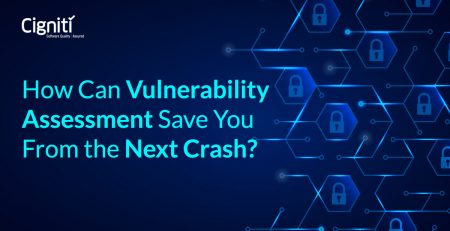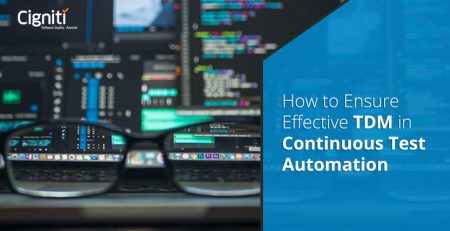Why Should You Think About Data Security
|
Listen on the go!
|
Why is a holistic approach to data security (covering multiple layers including host, network, and application), required to achieve the goal of hack-resilient Mobile or Web applications and products? Incorporating security features into an application’s design, implementation, and deployment requires spending more time testing Data Security. This helps us to understand how attackers think, which increases the awareness regarding their likely tactics, furthermore helping us apply more effective countermeasures.
Drawbacks of Overlooking Data Security
Most of the businesses think that hackers cause most security breaches. The fact is that 80% of data loss is actually caused by insiders. They relax with the thought that encryption keeps their data secure where it is only one of the approaches of securing data. Security also requires testing access control, system availability, data integrity, and auditing. Overlooking security testing can cause major harm to the applications. Organizations relaying upon Firewalls are unaware that 40% of Internet break-ins occur in spite of a firewall being in place. Understanding the fundamentals of Data Security Requirements ensures that it’s worth spending more time for data security rather than facing application failures, or losing trust and brand image due to security pitfalls.
Fundamental Data Security Requirements
Following are some of the basic security standards that ensure application quality and security:
- Confidentiality – Confidentiality must be maintained for the following aspects of a user’s data:
- Privacy of Communications: Privacy in the business world involves safeguarding proprietary information about products and processes, trade secrets, competitive analyses, as well as sales and marketing plans. For governments, privacy involves protecting the confidentiality of millions of individual citizens while collecting and analyzing demographic information.
- Secure Storage of Sensitive Data: It also involves the ability to maintain secrecy that can affect an organization’s or a country’s interests.
- Granular Access Control: All authenticated users do not have access to all the resources. It is required to understand that when a user is authenticated, verification is done which authorizes the user for an application. Authorization is the process by which the user’s privileges are ascertained. It is followed by Access control, which is a process by which the user’s access to physical data in the application identified based on his privileges.These critical checks in distributed systems safe guard sensitive data.
- Authenticated Users: Authentication methods as described above seek to guarantee the identity of system users.
- Integrity: Data needs to be intact and protected from deletion and corruption while it resides within the database, and also while it is in transit over the network.
- Availability: A protected framework makes information accessible to approved clients, immediately.
Security Requirements in the Internet Environment
Internet and the technologies through which one can access it are expanding the realm of data risk and security in several ways. Digital transformation of business systems on the Internet offers potentially unlimited opportunities for increasing efficiency and reducing cost. It also offers potentially unlimited risk. This is because Internet is accessible not only to users, but also to disgruntled employees, hackers, criminals, and corporate spies. This creates a scenario where companies need to make a cautious move while making business online. Managing access to sensitive information and preventing unauthorized access to information has become a very high priority task. It’s evident that for an effective e-business system to succeed, both the risk and the need to mitigate the risk against unauthorized access have become paramount.
Large communities that access corporate data also increase the scalability of security mechanisms and management of these mechanisms. Internet-enabled business systems exchange data with systems owned and controlled by partners, suppliers, customers, and so on. This situation demands security mechanisms deployed in e-business systems to be standard-based, flexible, and interoperable, ensuring that they work with customers, suppliers, and partner’s systems. They should be capable to support thin clients, and work in multitier architectures.
Protecting company’s valuable Information helps in keeping ahead of competitors which in turn expands business into new markets. It involves decisions to be made regarding sensitive client’s information, strategies to decide on reducing costs of development, software interoperability, and meeting current standards. A cross-functional, leadership-backed approach focusing on the real risks that a firm faces leads employees and clients to become strong believers in the organization’s competitive differentiator, that is, to keep the private data of clients, employees, and customers – private.
Large enterprises when compared with small organizations build their ability or have an obligation to engage in a formal risk assessment process. Smaller and medium businesses (SMBs) that intend to pursue an internal assessment can consider five steps to develop a solid foundation for their security strategy. These steps are ideal for organizations that need simple guidance on getting started. It is advisable to invest more time and effort to understand any existing risk assessment requirements to develop meaningful results.
5-Step Process for Successful Implementations
How to start or who to start with? A discussion starting with decision makers including business owners, C-level management, IT, and finance department, helps initiating the 5-step process faster, as it enables quick decisions and drives the teams towards successful implementations.
- Identifying information assets that the company handles and making a priority list of what needs to be protected. For example, social security numbers, payment card numbers, patient records, designs, and human resources data. The whole exercise may take about 2 hours of time.
- Locating information assets that the company handles and making a list where each item of the asset list resides within the organization. For example, file servers, workstations, laptops, removable media, PDAs and phones, and databases.
- Categorizing information assets. Assign a rating to your information asset list.
- Sensitive internal information like strategic initiatives, business plans, items subject to non-disclosure agreements, etc.
- Compartmentalized internal information compensation information, merger and acquisition plans, layoff plans, etc.
- Regulated information patient data, classified information, etc.
- Public information marketing campaigns, contact information, finalized financial reports, etc.
- Internal, but not secret, information such as phone lists, organizational charts, office policies, etc.
This classification scheme lets you rank information assets based on the amount of harm caused if the information was disclosed or altered. The team should strive to be realistic and aim for consensus.
- Rating the threats faced by top-rated information assets. One option is to use Microsoft’s STRIDE method (Spoofing of user identity (S), Tampering (T), Repudiation (R), Information disclosure (privacy breach or data leak) (I), Denial of service (D.o.S) (D), Elevation of privilege (E), or STRIDE in short), which is simple, clear, and covers most of the top threats. Companies can consider using an outside consultant, or a company providing experts in Test Data Management and Test Advisory Services to facilitate conversation.
- Finalize data and start planning. It includes both the importance of the assets at stake and a broad spectrum of possible contingencies. A reasonable security plan can be used to tackle the risks identified.
Test Data Management and Test Advisory Services
Implementation of a proper test data management system based on an experienced test advisory services provider ensures customized Quality control systems for better outcomes leveraging industry practices. These also help in developing indigenous baselines for arriving at the best possible solution for a given business scenario. A formidable differentiator in today’s techno-driven global economy is Software Quality. Achieving Quality requires a carefully crafted test strategy designed by experts after scrupulous observation. Based on this, organizations can address their software testing requirements ranging from manual testing to operation of Test Automation Frameworks. Successful implementation of these strategies need close monitoring by a combination of people, processes, and technology.
Cigniti’s Test Data Management and Test Advisory Services ensure flawless testing operations with right test infrastructure, tools, resources, and right skill sets to address your software testing requirements. Successful applications at Cigniti are made possible as expert teams spend more time in understanding the current system and focussing on process improvement, optimization, and improved utilization, thereby building trust through security testing. For more details you can visit https://www.cigniti.com/test-advisory-services or mail to contact@cigniti.com.






Comment (1)
[…] often face difficulty in extracting the right information from the huge data packs available with them. While the Big Data Analytics helps in getting deeper and exploratory […]